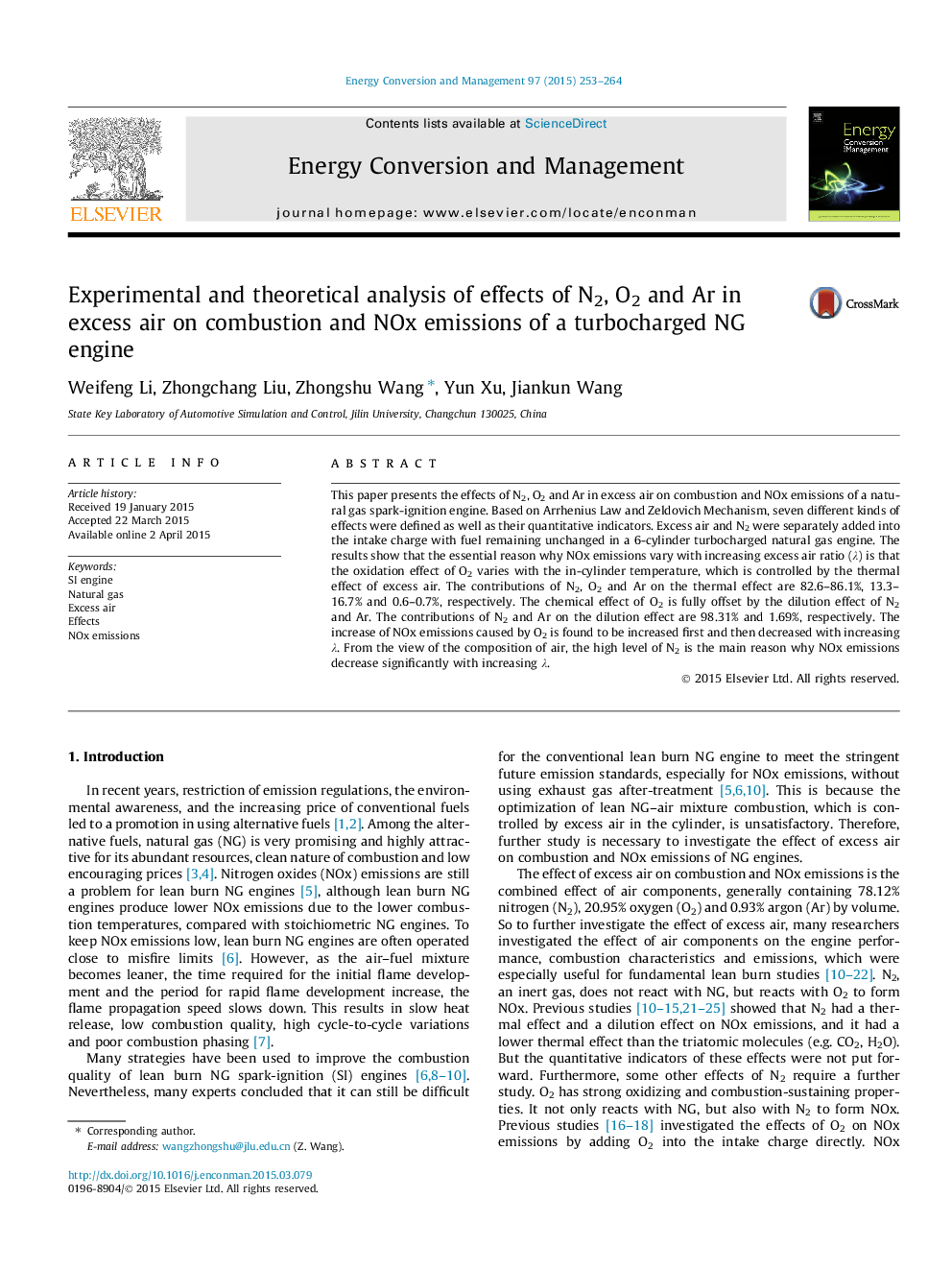| Article ID | Journal | Published Year | Pages | File Type |
|---|---|---|---|---|
| 760584 | Energy Conversion and Management | 2015 | 12 Pages |
•We defined 7 effects of excess air and quantitative indicators on NOx emissions.•Contributions of N2, O2 and Ar on the thermal effect are separately 85%, 14% and 1%.•Contributions of N2 and Ar on the dilution effect are 98.8% and 1.2%, respectively.•The high level of N2 in air is the main reason why NOx emissions decrease with λ.
This paper presents the effects of N2, O2 and Ar in excess air on combustion and NOx emissions of a natural gas spark-ignition engine. Based on Arrhenius Law and Zeldovich Mechanism, seven different kinds of effects were defined as well as their quantitative indicators. Excess air and N2 were separately added into the intake charge with fuel remaining unchanged in a 6-cylinder turbocharged natural gas engine. The results show that the essential reason why NOx emissions vary with increasing excess air ratio (λ) is that the oxidation effect of O2 varies with the in-cylinder temperature, which is controlled by the thermal effect of excess air. The contributions of N2, O2 and Ar on the thermal effect are 82.6–86.1%, 13.3–16.7% and 0.6–0.7%, respectively. The chemical effect of O2 is fully offset by the dilution effect of N2 and Ar. The contributions of N2 and Ar on the dilution effect are 98.31% and 1.69%, respectively. The increase of NOx emissions caused by O2 is found to be increased first and then decreased with increasing λ. From the view of the composition of air, the high level of N2 is the main reason why NOx emissions decrease significantly with increasing λ.
